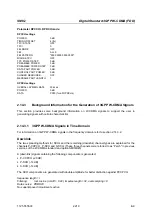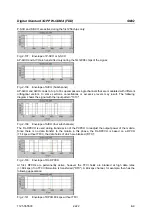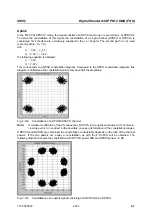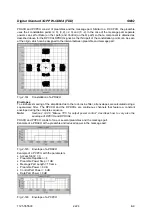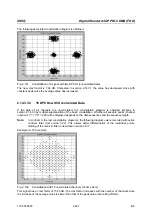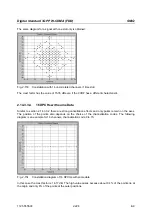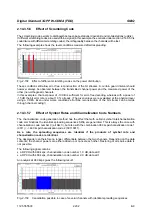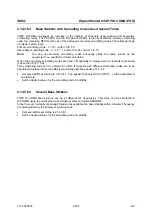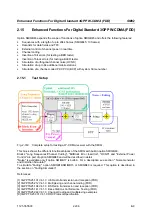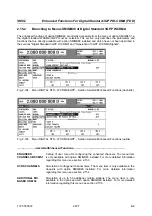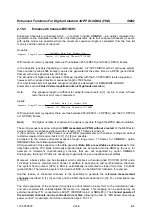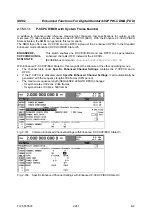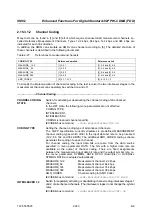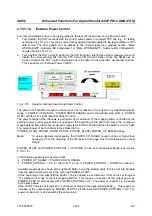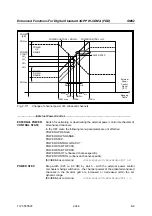
Digital Standard 3GPP W-CDMA (FDD)
SMIQ
1125.5555.03
E-9
2.232
2.14.3.5.6
Effect of Scrambling Code
The scrambling code permits to distinguish between base stations (downlink) and mobile stations (uplink).
If different scrambling codes are used within a signal (in this example, the scenario under section 2.14.3.5.3 is
coded twice with different scrambling codes), the orthogonality between the channels will be lost.
The following example shows the level conditions measured after despreading:
Fig. 2-158
Effect of different scrambling codes on the power distribution
These conditions still allow error-free reconstruction of the bit streams. A certain guard interval should
however always be observed between the transmitted channel power and the measured power of the
other (non-orthogonal) channels.
In this example a channel power of -10 dB is sufficient for error-free decoding, whereas with a power of
-15 dB the bit error rate is about 10 % already. (The given values were evaluated at the physical layer
using a CDPA. Even under worse conditions error-free reconstruction of the bit stream can be made
through channel coding!)
2.14.3.5.7
Effect of Symbol Rates and Channelization Code Numbers
The channelization code generation method has the effect that with certain symbol rate/channelization
code combinations the identical spreading sequences Si/Sq are generated. This is always the case with
channelization code number 0 (all bits 0), but also with the combination 960 ksps/channelization code 1
(0011) <-> 480 ksps/channelization code 2 (00110011).
As a rule, the spreading sequences are identical if the products of symbol rate and
channelization code are identical.
The despreader can therefore no longer differentiate between the two channels. Depending on the data
contents, the channel powers are either added up or cancel each other. Restoring of all source data is
not possible.
The following signal contains
•
a DPCH with 960 ksps, channelization code number 1, 0 dB, data all 0
•
a DPCH with 480 ksps, channelization code number 2, 0 dB, data all 1
An analysis at 960 ksps gives the following result:
Fig. 2-159
Cancellation possible in case of several channels with identical spreading sequences


